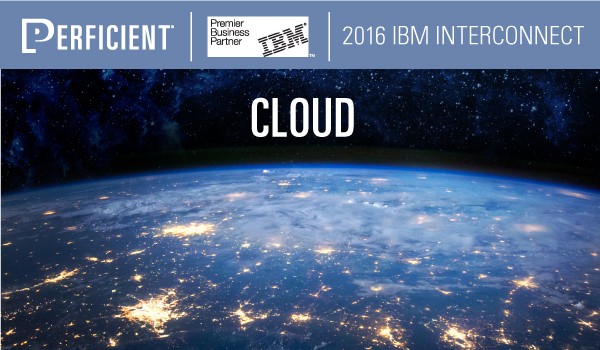
At IBM’s InterConnect 2016 mega-conference, Sean Wright, Perficient Technical Director of IBM Mobile, and Ronda Kiser-Oakes, IBM Champion and Perficient Director of IBM Cloud and DevOps, presented a session called “Migrate Existing Web Services and Build Microservices in Bluemix” detailing a success story where they engaged with a National Healthcare client and migrated their existing web services to Bluemix using Perficient’s award-winning Immersion solution.
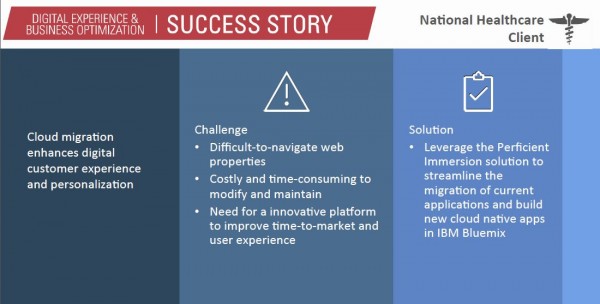
Considering this was a lunch-time session, it was surprisingly well-attended.
Perficient Positioning
Sean first highlighted the benefits of engaging Perficient as the Solution provider versus going with a small boutique or a large integrator.
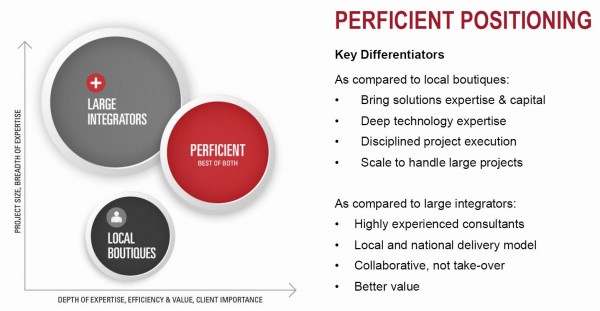
He then explained that many clients are impressed with what IBM is doing in the cloud and with Bluemix and that they would love to jump on board but are hesitant because they don’t know how to go about it. In addition, many of them are worried they won’t succeed at first. It is indeed unrealistic to expect everything is going to work perfectly right off the bat. However, that should not be considered failure. Rather, failure would be not to innovate at all. On the other hand, innovating should not be done for its own sake. It’s actually all about adding $s to he bottom line.
Migration Approach
The first step in a cloud migration effort is the innovation lab. This is where the migration approach options are discussed and a choice is made on how to proceed. This can last from a couple of days to a couple of weeks.
Migration approach options available are:
- “Re-host” the existing services in Bluemix. Options include:
- Evaluate Liberty profile fit for existing services.
- Evaluate IBM Containers (Docker) fit for existing services.
- Evaluate Application Server on Cloud. Full profile WAS hosted in Bluemix, preconfigured and hosted on RHEL guest.
- “Re-architect” existing services for Bluemix. Options include:
- SpringCloud
- Liberty Profile
- Node.js
Swift is also definitely an option when re-architecting services.
The actual migration is done using Perficient’s award-winning Immersion approach. It includes continuous delivery, the actual migration and validation.
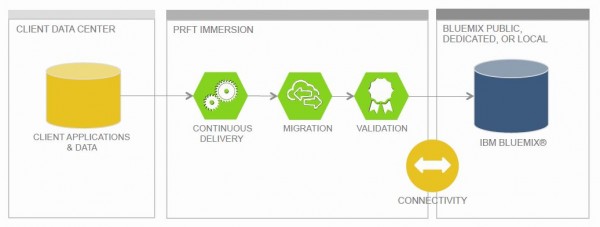
Microservices & API Connect
Sean also discussed how Perficient has been helping clients leveraging microservices because too often too much functionality is bundled into one application. Employing microservices allows for smaller teams. and more efficient build and deployment processes.
![]() At this point, the session attendees were pleasantly surprised when Bill Barrus, IBM’s PureApplication Systems, API Management, and DataPower SME came up and talked about IBM’s recent announcement regarding IBM API Connect: A complete API lifecycle offering. Perficient has been using API Connect for a while in its Cloud solutions and is excited IBM is now offering it as part of their Cloud solutions portfolio.
At this point, the session attendees were pleasantly surprised when Bill Barrus, IBM’s PureApplication Systems, API Management, and DataPower SME came up and talked about IBM’s recent announcement regarding IBM API Connect: A complete API lifecycle offering. Perficient has been using API Connect for a while in its Cloud solutions and is excited IBM is now offering it as part of their Cloud solutions portfolio.
![]()
DevOps Perspective
In the next part of the session, Ronda discussed the DevOps perspective.
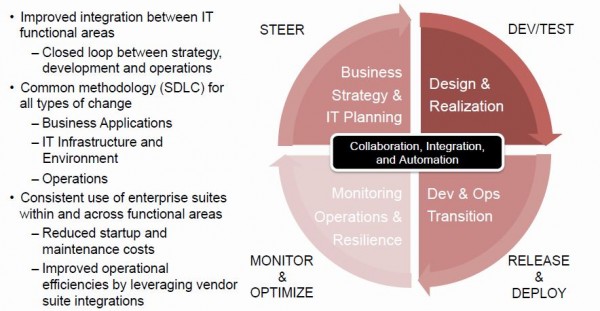
Takeaways:
- DevOps is all about bringing the entire IT organization together;
- A culture of communication, collaboration and integration needs to be put in place;
- Continuous integration, deployment and delivery requires many different tools and processes, however, Perficient works with a variety of tools;
- Jenkins is becoming very common as a build automation tool;
- UrbanCode is becoming more and more popular as the deployment automation and release orchestration tools respectively.
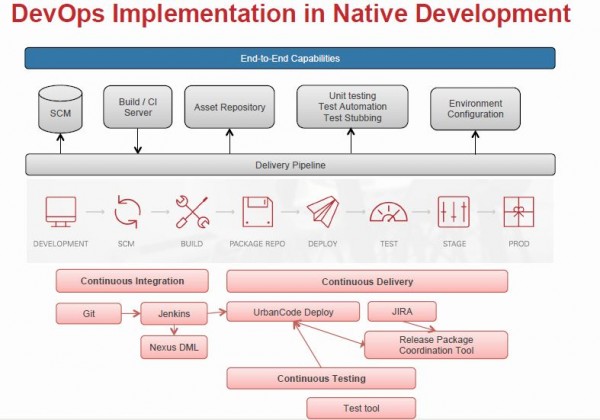
Conclusion
Both Ronda and Sean emphasized that Perficient sees it clients as business partners first. The idea is to build relationships that will result in wins for both. Perficient is always willing to come on-site for a demo. Contact Ronda or Sean for more information.
